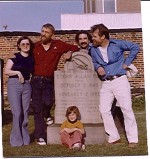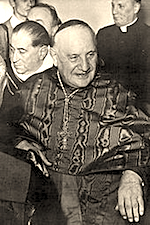By NIGEL WHEALE.
‘Man will be ultimately known for a mere polity of multifarious, incongruous and independent denizens. I, for my part, from the nature of my life, advanced infallibly in one direction and in one direction only.’ —Hyde, of Edinburgh
‘bt w’re aa kenyans at da end o’t.’ —Derick fae Yell
 A PAIR OF elaborate monuments frames St Rognvald’s Chapel at the east end of St Magnus Cathedral, Kirkwall. Magnus was canonised in 1133, and his cathedral was begun in 1137, at the initiative of Rognvald (‘Ronald’), Magnus’s nephew. It’s thought that English masters (architects) and masons who had worked at Durham Cathedral and Dunfermline Abbey were employed in construction of the first phases of St Magnus Cathedral.
A PAIR OF elaborate monuments frames St Rognvald’s Chapel at the east end of St Magnus Cathedral, Kirkwall. Magnus was canonised in 1133, and his cathedral was begun in 1137, at the initiative of Rognvald (‘Ronald’), Magnus’s nephew. It’s thought that English masters (architects) and masons who had worked at Durham Cathedral and Dunfermline Abbey were employed in construction of the first phases of St Magnus Cathedral.
 ‘The choir, which is the earliest part, is the finest Romanesque work north of Durham, which inspired it’. To the north side of the apsidal altar is a monument to William Balfour Baikie, and to the south, another commemorating John Rae. Between them, on the central altar, an open copy of Scripture, in Norwegian, the pages turned each day, and next it, a rather fine model ‘Viking’ long ship. There is a (male) poets and scholars’ corner here too, with one space vacant, top right. The fusion of diverse cultures and connections within this east end is formidable, moving yet bizarre, intensely masculinist; Mary is not present, perhaps purged during Reformation. Continue reading “Scottish independence — as seen from Orkney.” »
‘The choir, which is the earliest part, is the finest Romanesque work north of Durham, which inspired it’. To the north side of the apsidal altar is a monument to William Balfour Baikie, and to the south, another commemorating John Rae. Between them, on the central altar, an open copy of Scripture, in Norwegian, the pages turned each day, and next it, a rather fine model ‘Viking’ long ship. There is a (male) poets and scholars’ corner here too, with one space vacant, top right. The fusion of diverse cultures and connections within this east end is formidable, moving yet bizarre, intensely masculinist; Mary is not present, perhaps purged during Reformation. Continue reading “Scottish independence — as seen from Orkney.” »
![]() Appearing on an Arabic Christian television station, Kamel said that the families of the men, laborers who were working in Libya in order to provide for their families — 13 of them from the same small, impoverished village — were congratulating one another. “We are proud to have this number of people from our village who have become martyrs,” he explained. Continue reading “Christians thanking their Islamic murderers.” »
Appearing on an Arabic Christian television station, Kamel said that the families of the men, laborers who were working in Libya in order to provide for their families — 13 of them from the same small, impoverished village — were congratulating one another. “We are proud to have this number of people from our village who have become martyrs,” he explained. Continue reading “Christians thanking their Islamic murderers.” »
























